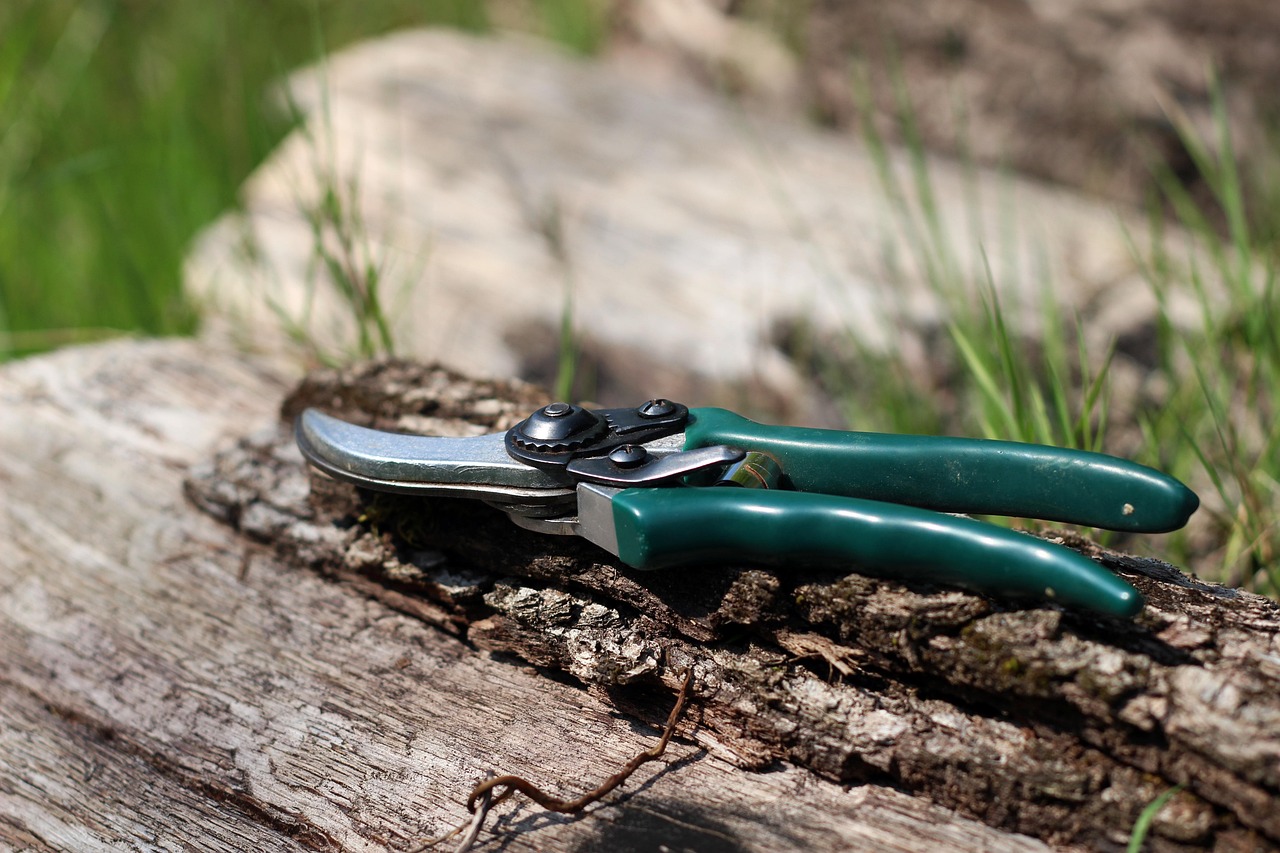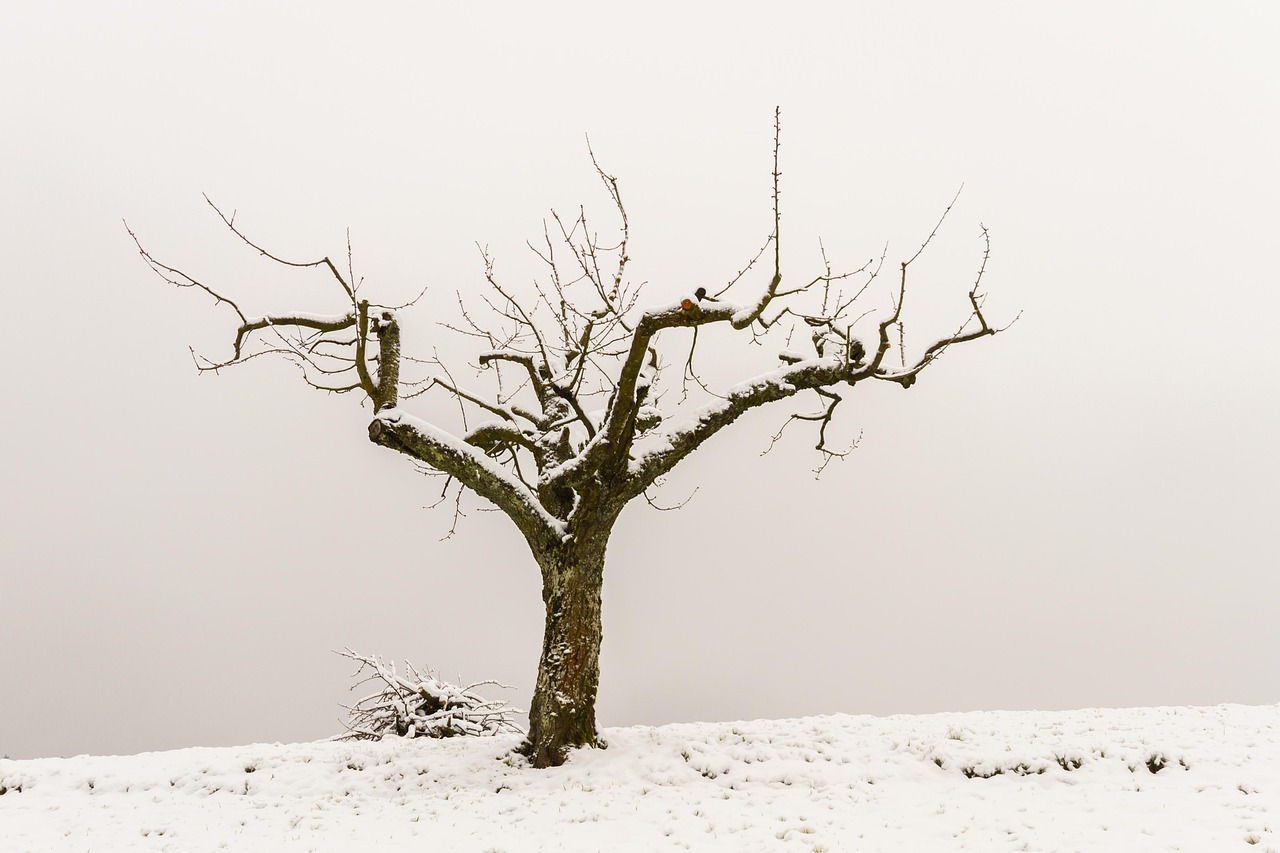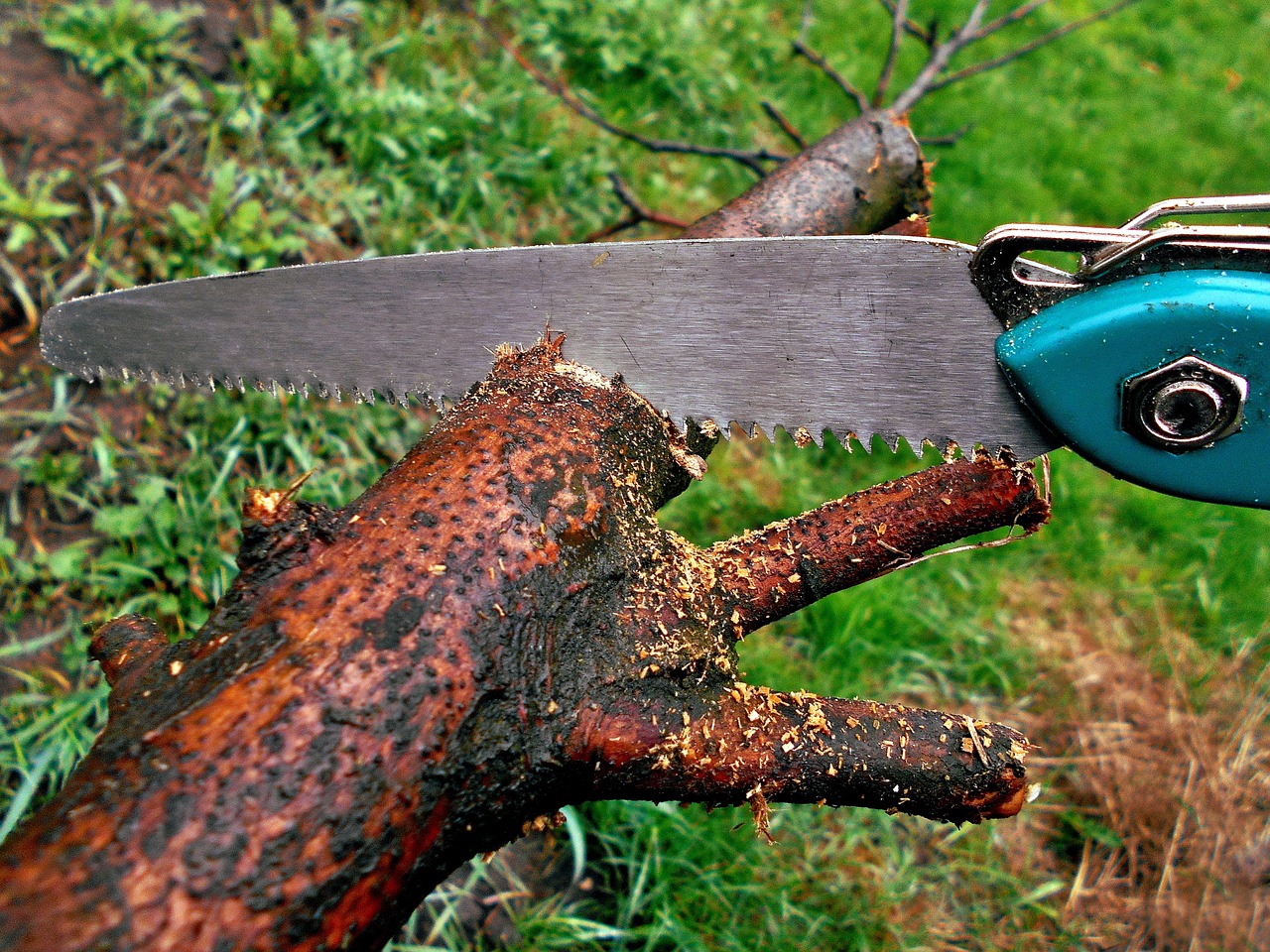Winter pruning for frost-sensitive trees involves careful timing and techniques to minimize damage. Pruning during dormancy helps promote healthy growth while reducing the risk of frost injury. It is crucial to select the right time and methods to protect these delicate trees.
Understanding Winter Pruning
Pruning is an essential practice for maintaining the health and appearance of trees. During winter, many trees enter a dormant phase. This dormancy provides an ideal opportunity for pruning as the trees are less stressed and can heal more efficiently. However, frost-sensitive trees require special attention to ensure they are not harmed by cold temperatures.

Frost-sensitive trees, such as certain fruit trees and flowering varieties, can easily suffer from frost damage if pruned incorrectly. When these trees are pruned, their exposed tissues can be vulnerable to freezing temperatures. Understanding how to effectively prune these trees during winter is vital for their survival and health.
Benefits of Winter Pruning
There are several benefits to pruning trees in winter, especially those sensitive to frost. These benefits include:
- Reduced Stress: Dormant trees experience less stress when pruned. This allows them to recover more quickly in spring.
- Improved Airflow: Pruning opens up the canopy, improving airflow and reducing the risk of fungal diseases.
- Enhanced Growth: Strategic pruning encourages healthier growth patterns in the following growing season.
- Better Fruit Production: For fruit trees, winter pruning can lead to increased yield and better-quality fruit.
Timing Your Pruning
The timing of winter pruning is critical. Pruning should generally occur during late winter, just before the buds begin to swell. This timing helps minimize potential damage from frost. If pruning is done too early, exposed cuts may be vulnerable to freezing temperatures. Conversely, if done too late, the tree may not have enough time to heal before the growing season begins.

To help determine the best time for pruning, consider the following factors:
| Factor | Recommended Timing |
|---|---|
| Tree Species | Late winter, before bud swell |
| Climate Zone | Adjust based on local temperatures |
| Frost Dates | After last expected frost date |
Techniques for Pruning Frost-Sensitive Trees
When pruning frost-sensitive trees, it is essential to use proper techniques to ensure minimal damage. Here are some effective methods:
- Thinning Cuts: Remove branches that are crowded or crossing to improve airflow and sunlight penetration.
- Heading Cuts: Shorten branches without removing them entirely, promoting bushier growth while maintaining structure.
- Avoid Topping: Never top trees, as this can lead to weak growth and increased vulnerability to frost damage.
Additionally, always use sharp, clean tools to make precise cuts. This minimizes tissue damage and helps the tree heal more effectively. After pruning, consider applying a protective sealant to larger cuts to prevent moisture loss and disease entry.

Signs of Frost Sensitivity
It is important to recognize signs that a tree may be frost-sensitive. Some common indicators include:
- Brittle Branches: If branches snap easily when bent, they may be more susceptible to frost damage.
- Pale or Yellowing Leaves: During the growing season, leaves that lose their color may indicate stress.
- Delayed Budding: Trees that bud later than other varieties may be more vulnerable to temperature fluctuations.
By identifying these signs early, you can take proactive steps to protect your trees from frost damage during the winter months.
In summary, understanding the needs of frost-sensitive trees during winter pruning is essential for their health and longevity. Proper timing, techniques, and awareness of their sensitivity will help ensure these beautiful trees thrive in your landscape.

Choosing the Right Tools for Pruning
When it comes to pruning frost-sensitive trees, using the right tools is essential. The tools you choose can significantly affect the quality of your cuts and the overall health of the tree. Here are some common tools used in winter pruning:
- Hand Pruners: Ideal for small branches up to ¾ inch in diameter. They provide precise cuts and are easy to handle.
- Loppers: Useful for larger branches, typically between ¾ inch and 1.5 inches. They offer more leverage than hand pruners.
- Pruning Saws: Best for branches larger than 1.5 inches. Choose a saw with a sharp blade to ensure clean cuts.
- Hedge Shears: Suitable for shaping and trimming hedges or smaller shrubs but not recommended for larger trees.
Before starting your pruning session, ensure that all tools are clean and sharp. This not only makes the job easier but also reduces the risk of introducing diseases to the tree.
Proper Pruning Techniques
After selecting the right tools, mastering proper pruning techniques is crucial for minimizing harm to frost-sensitive trees. Here are some key techniques to consider:
Making Appropriate Cuts
Pruning involves two primary types of cuts: thinning cuts and heading cuts. Each serves a different purpose:
- Thinning Cuts: These cuts remove entire branches back to their point of origin. They help reduce crowding and improve air circulation, which is essential for the health of frost-sensitive trees.
- Heading Cuts: These cuts shorten branches by cutting back to a bud or side branch. While they can stimulate bushier growth, they should be used sparingly to avoid excessive stress on the tree.
Angle of Cuts
The angle at which you make cuts can also affect healing. Always cut at a slight angle, about 45 degrees, away from the bud or branch collar. This allows water to run off and reduces the risk of rot.
Post-Pruning Care
After pruning, frost-sensitive trees require special attention to ensure they remain healthy and protected from winter conditions. Here are some care tips:
- Watering: Ensure trees receive adequate moisture throughout winter, especially if there are dry spells. This helps keep the tree hydrated.
- Mulching: Apply a layer of mulch around the base of the tree to retain moisture and regulate soil temperature.
- Protection from Frost: For extremely sensitive species, consider wrapping trunks with protective materials or using frost blankets during cold snaps.
Common Mistakes in Winter Pruning
Even experienced gardeners can make mistakes when it comes to pruning. Being aware of common pitfalls can help you avoid them:
- Pruning at the Wrong Time: As mentioned earlier, timing is critical. Pruning too early or too late can expose trees to frost damage.
- Over-Pruning: Removing too many branches can weaken the tree and reduce overall health.
- Poor Cutting Techniques: Making jagged cuts or cutting too close to the trunk can harm the tree and invite disease.
Selecting Frost-Sensitive Tree Varieties
If you are considering adding new trees to your landscape, it is essential to choose varieties that are less susceptible to frost damage. Here are some commonly planted frost-sensitive trees:
| Tree Variety | Description | Frost Sensitivity Level |
|---|---|---|
| Cherry Trees | Beautiful flowering trees that produce fruit. | High |
| Citrus Trees | Tropical trees known for their fruit. | Very High |
| Magnolia Trees | Stunning flowers in spring, but sensitive to late frosts. | Moderate |
| Pear Trees | Popular fruit-bearing trees with beautiful blossoms. | Moderate |
Selecting varieties with lower frost sensitivity may help you avoid complications associated with winter pruning and ensure a thriving landscape year-round.
By understanding the tools, techniques, and common mistakes involved in winter pruning, you can better protect frost-sensitive trees and promote their health as they transition into spring growth.
Identifying the Best Practices for Winter Pruning
To ensure the health and vitality of frost-sensitive trees, implementing best practices during winter pruning is essential. These practices not only promote recovery but also enhance future growth and fruit production. Here are some key best practices to consider:
Assessing Tree Health Before Pruning
Before initiating any pruning, it is crucial to assess the overall health of the tree. Look for signs of disease, pest infestations, or physical damage. A healthy tree is better equipped to handle pruning stress. Key factors to check include:
- Leaf Condition: Check for discoloration or spots that may indicate disease.
- Branch Integrity: Look for broken or dead branches that need removal.
- Root Zone: Ensure the area around the tree’s base is free from weeds and debris, which can harbor pests.
Taking time to evaluate the tree’s health sets a solid foundation for effective pruning.
Understanding Tree Growth Patterns
Each tree species has its unique growth patterns. Understanding these patterns can guide your pruning decisions. For instance, some trees naturally grow in an upright manner while others tend to spread out. Familiarize yourself with the specific growth habits of the trees you are pruning, as this knowledge will help you make informed decisions about which branches to remove.
Common Growth Patterns
| Tree Species | Growth Pattern | Pruning Focus |
|---|---|---|
| Apple Trees | Upright, spreading | Encourage open center for sunlight |
| Peach Trees | Upright | Maintain a strong central leader |
| Crape Myrtle | Mounding, spreading | Remove old growth to promote new blooms |
| Dogwood Trees | Layered, horizontal | Thin out crowded areas to improve airflow |
Utilizing Protective Measures During Pruning
When pruning frost-sensitive trees, employing protective measures can help mitigate potential damage from cold weather. Here are some strategies to consider:
- Avoid Pruning on Frosty Days: Prune when temperatures are above freezing to prevent additional stress on the tree.
- Cover Exposed Areas: After pruning, cover larger cuts with a protective sealant or tree wound dressing to prevent moisture loss.
- Use Frost Covers: If very low temperatures are expected after pruning, use frost covers to shield sensitive areas.
Monitoring Weather Conditions
Keeping an eye on weather conditions is vital when planning your winter pruning. Sudden changes in temperature can affect tree health and the effectiveness of your pruning efforts. Here are some tips for monitoring weather:
- Check Local Forecasts: Be aware of upcoming frosts or cold snaps that could threaten your trees.
- Observe Temperature Trends: Understand typical temperature fluctuations in your area to time your pruning appropriately.
- Avoid Pruning During Warm Spells: If a warm period occurs in winter, hold off on pruning until temperatures drop again.
Aftercare for Pruned Trees
The care you provide after pruning can significantly impact the recovery and health of frost-sensitive trees. Implementing a consistent aftercare routine is essential. Here are some recommended practices:
Watering and Fertilization
Proper watering and fertilization can aid in recovery after pruning. Consider the following tips:
- Irrigation: Provide regular watering, especially if there are dry spells during winter. Ensure deep watering to encourage root growth.
- Fertilization: Use a balanced fertilizer in early spring to support new growth. Avoid fertilizing late in winter as it may stimulate premature growth.
Pest and Disease Management
Post-pruning care should also include monitoring for pests and diseases. Here are important steps to take:
- Regular Inspections: Check trees frequently for signs of pests or disease following pruning.
- Pest Control: Use organic or chemical treatments as needed, based on inspections.
- Disease Prevention: Ensure proper spacing and airflow around trees to reduce disease risk.
Adjusting Tree Care Practices Seasonally
Your tree care practices should evolve with the seasons. After winter and into spring, consider adjusting your care methods:
- Shrub Pruning: As spring approaches, prune any shrubs around frost-sensitive trees to improve light exposure.
- Soil Maintenance: Conduct soil testing and amend as necessary to improve nutrient availability for growing trees.
- Mulching Practices: Refresh mulch layers in spring to retain moisture and suppress weeds as growth resumes.
Caring for frost-sensitive trees does not end with pruning. Implementing a robust aftercare routine ensures that they remain healthy and resilient throughout the changing seasons.
Long-Term Strategies for Maintaining Healthy Frost-Sensitive Trees
In addition to the immediate care following winter pruning, adopting long-term strategies will help maintain the health of frost-sensitive trees. These strategies focus on environment management, seasonal practices, and ongoing education regarding tree care.
Creating an Optimal Growing Environment
To ensure that frost-sensitive trees thrive, it is essential to create an optimal growing environment. This involves considering factors such as soil quality, sunlight exposure, and space for growth:
- Soil Quality: Regularly test your soil to ensure it has the right pH and nutrient levels. Amendments may include organic compost, peat moss, or well-rotted manure to enhance fertility.
- Sunlight Exposure: Ensure that trees receive adequate sunlight. Position new plantings away from taller trees or structures that may cast shade.
- Space for Growth: Plant trees with enough space between them to allow for airflow and prevent overcrowding. This helps reduce competition for nutrients and light.
Seasonal Care Adjustments
As seasons change, so should your approach to tree care. Each season brings unique challenges and opportunities for frost-sensitive trees:
- Spring: Monitor for signs of new growth and potential pests. Fertilize as needed and continue watering as trees awaken from dormancy.
- Summer: Focus on consistent watering, especially during dry spells. Mulch around the base can help retain moisture and suppress weeds.
- Fall: Begin preparing trees for winter by reducing watering as temperatures cool. Apply mulch if needed to insulate roots during colder months.
Engaging in Ongoing Education
Staying informed about tree care practices is vital for the long-term success of frost-sensitive trees. Consider the following avenues for education:
- Workshops and Classes: Participate in local gardening workshops or classes focused on tree care.
- Online Resources: Utilize reputable online resources and forums where experts share advice and best practices.
- Consulting Arborists: For complex issues or concerns, consider hiring a certified arborist who can provide tailored advice for your specific trees.
Final Thoughts
Winter pruning for frost-sensitive trees is a critical practice that enhances their health and vitality. By utilizing the right tools and techniques, monitoring environmental conditions, and providing appropriate aftercare, you can ensure your trees flourish even in challenging winter conditions. It is equally important to engage in continuous learning and apply seasonal care adjustments to foster a thriving landscape.
The care you provide today will not only influence the health of your trees this season but will also lay the groundwork for their long-term resilience. Whether you are an experienced gardener or a novice, understanding the nuances of winter pruning can help you cultivate a beautiful and productive garden filled with flourishing frost-sensitive trees.
As you embark on your winter pruning journey, remember that each tree is unique. Take the time to understand its specific needs and adjust your practices accordingly. With patience and care, you can create a lush environment where your frost-sensitive trees can thrive year after year.
